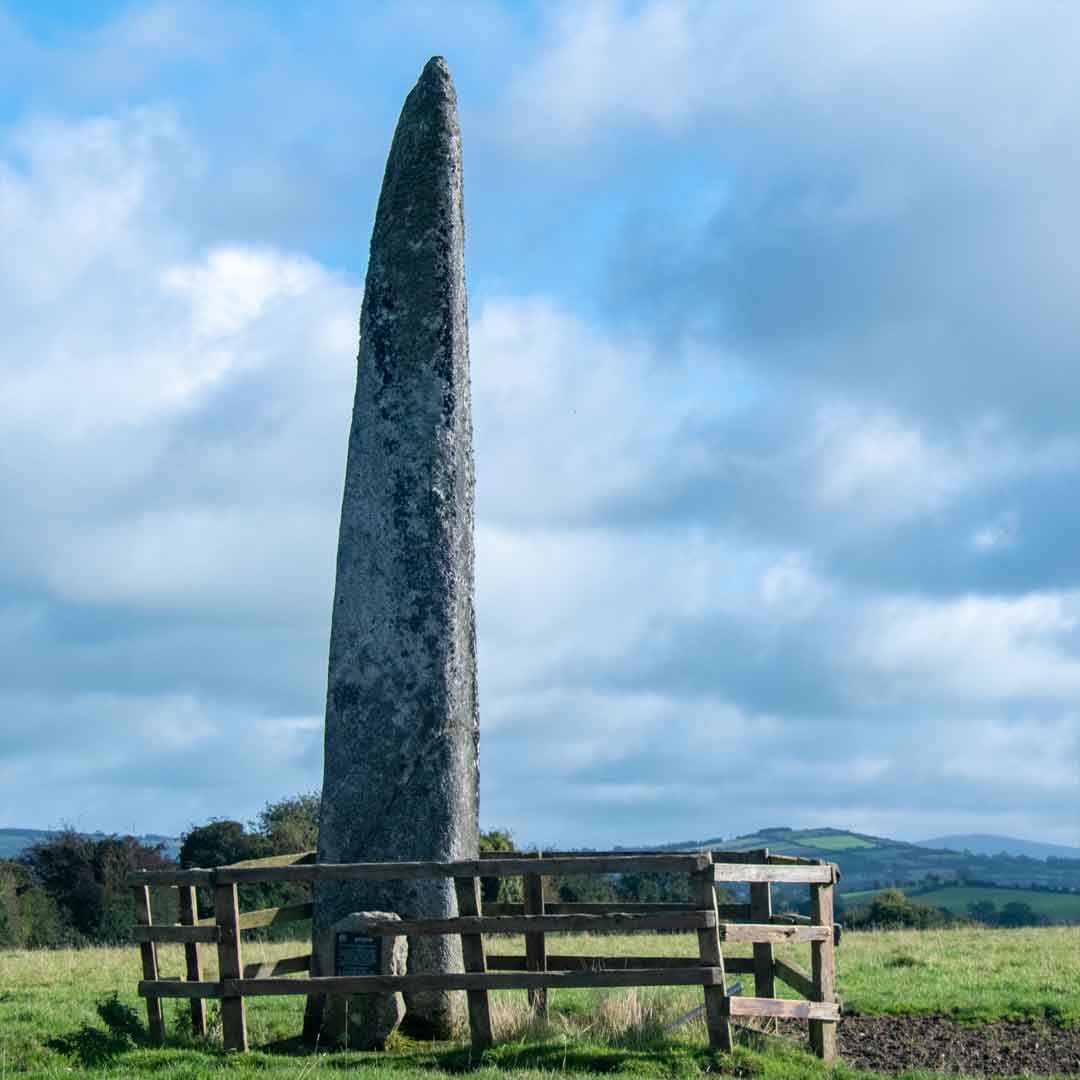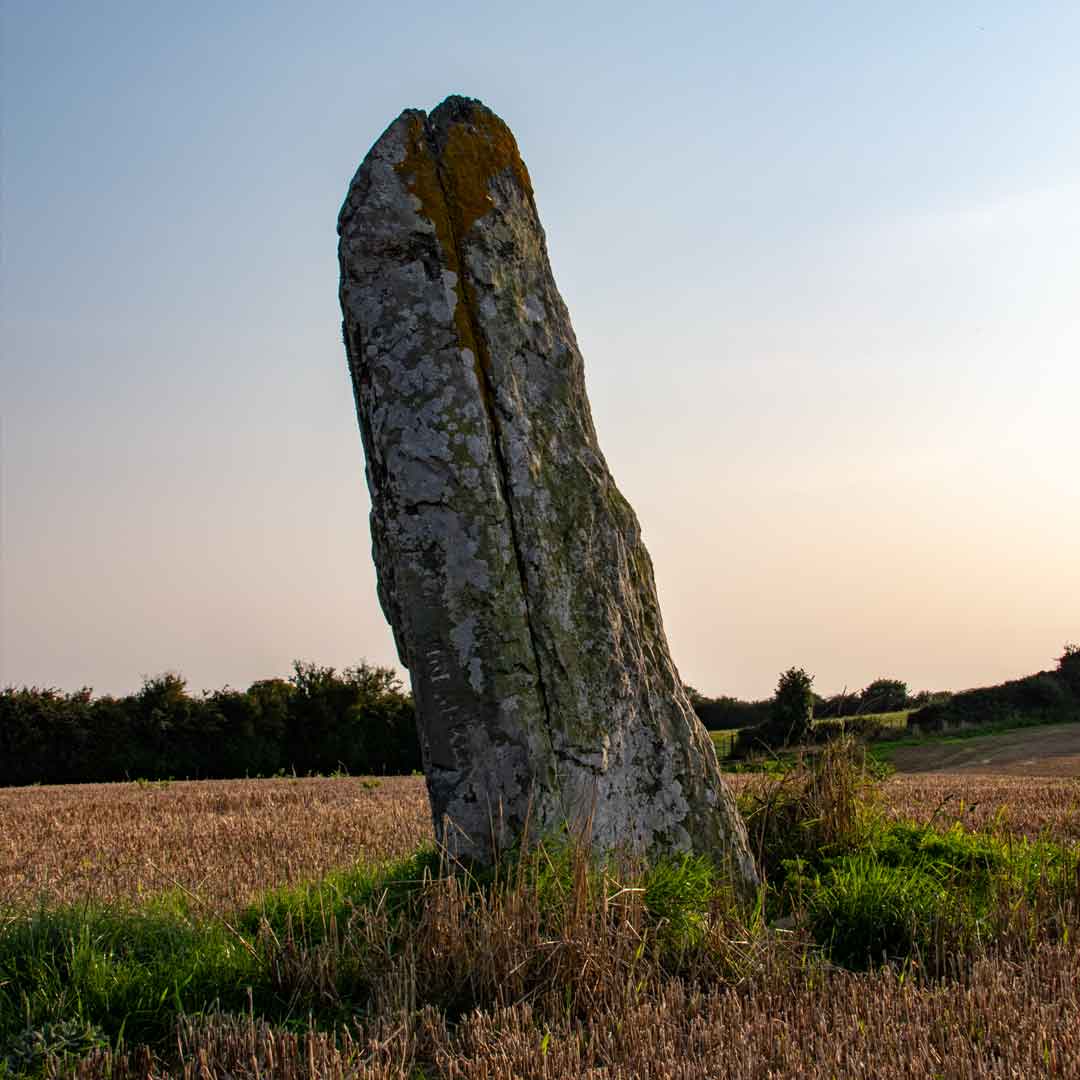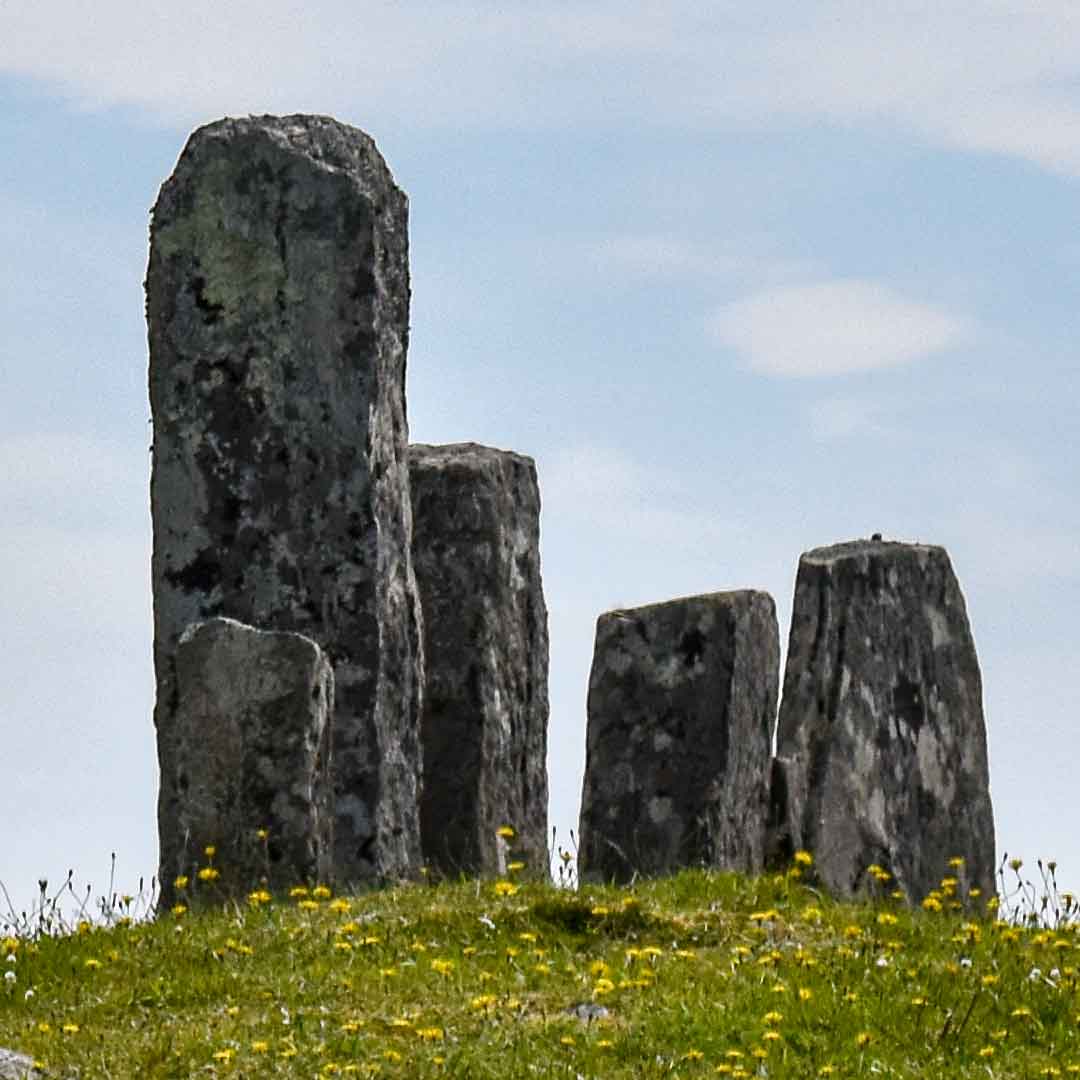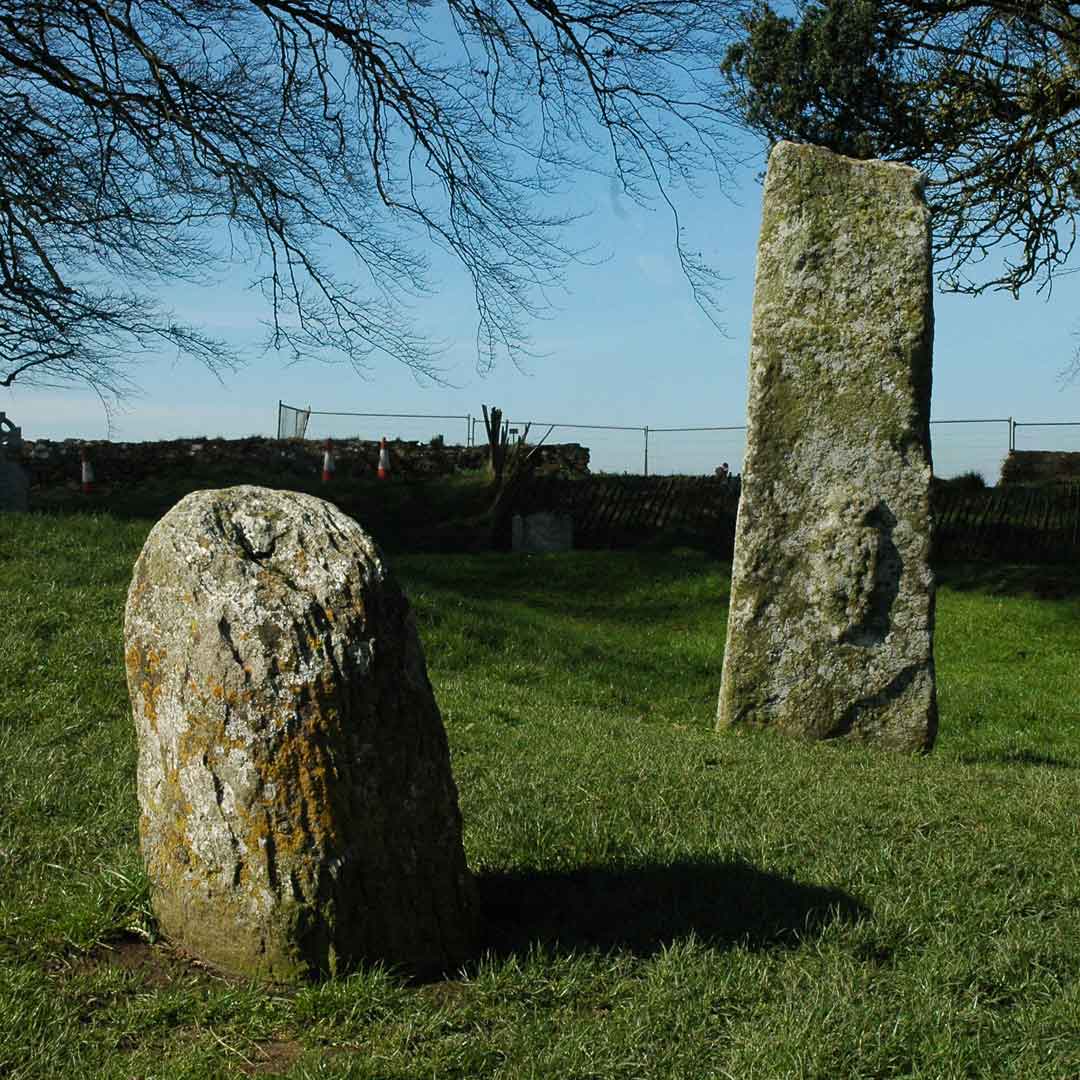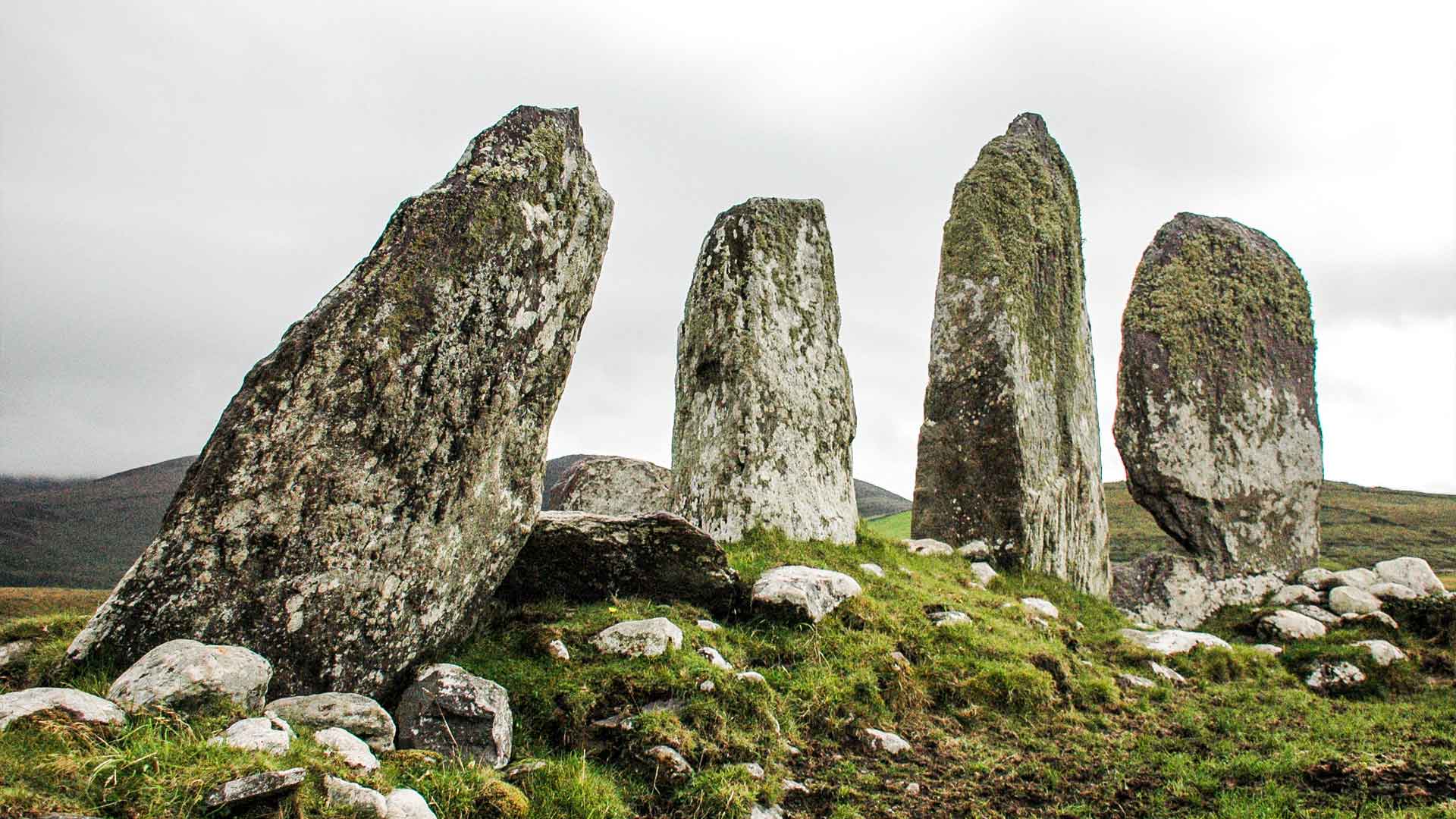
Standing Stones, Rows & Pairs
Standing Stones, also known as gallauns or menhirs, are found across the irish landscape. They can be found solely as monoliths, or as part of a group of similar stones, often in pairs or rows. Their size can vary considerably, but their shape is generally uneven and squared, often tapering towards the top.
Little is known of their intended function, though it is believed they were used variously as prehistoric burial markers, commemorative monuments, indicators of routeways or tribal boundaries. It is possible that rituals and other ceremonies would have been carried out around many of them.
There are over 5000 standing stones spread across Ireland with over 1000 in County Cork alone! That figure along with the 250+ stone pairs and 200+ stone rows, makes for a lot of these upright ancient rocks.
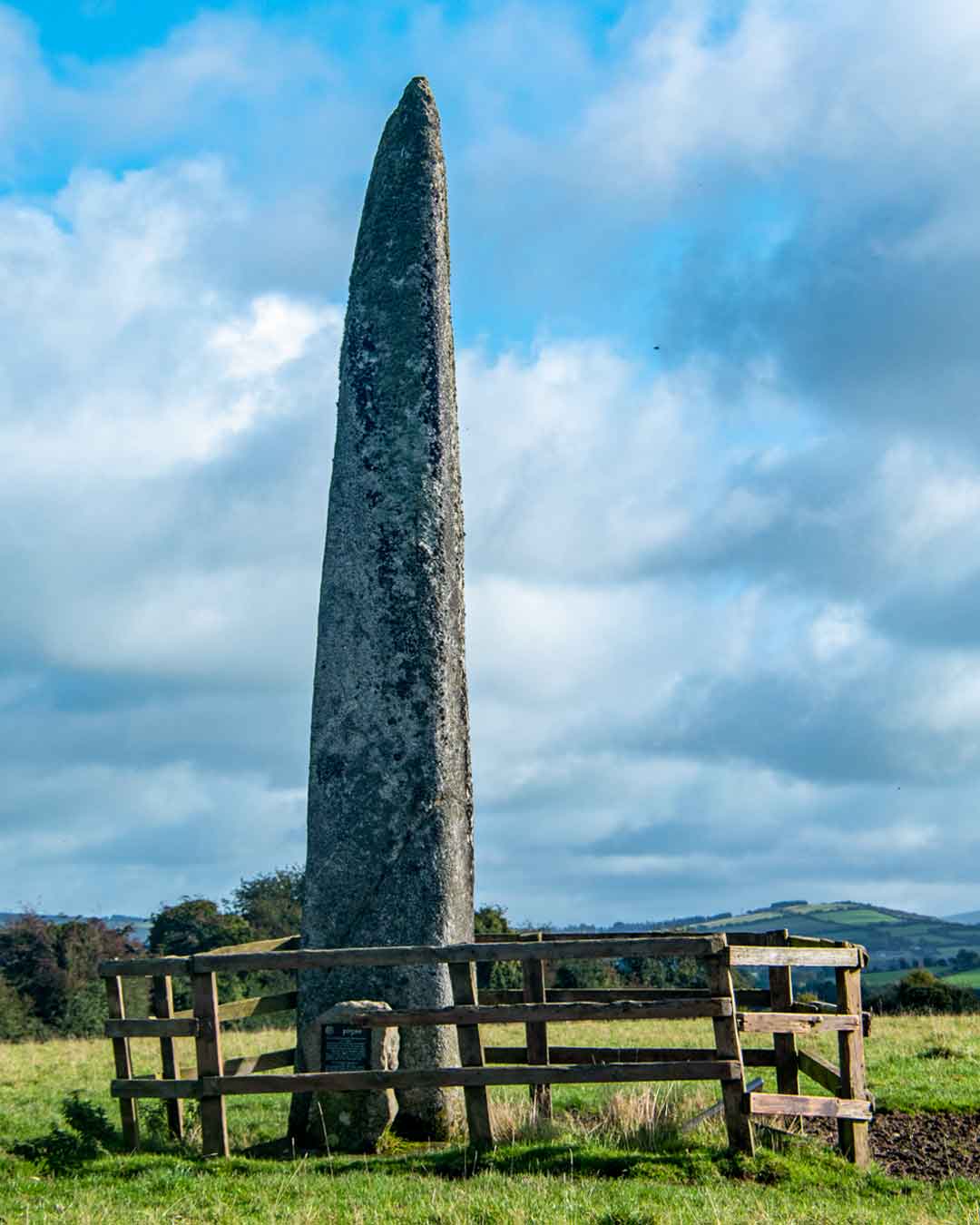
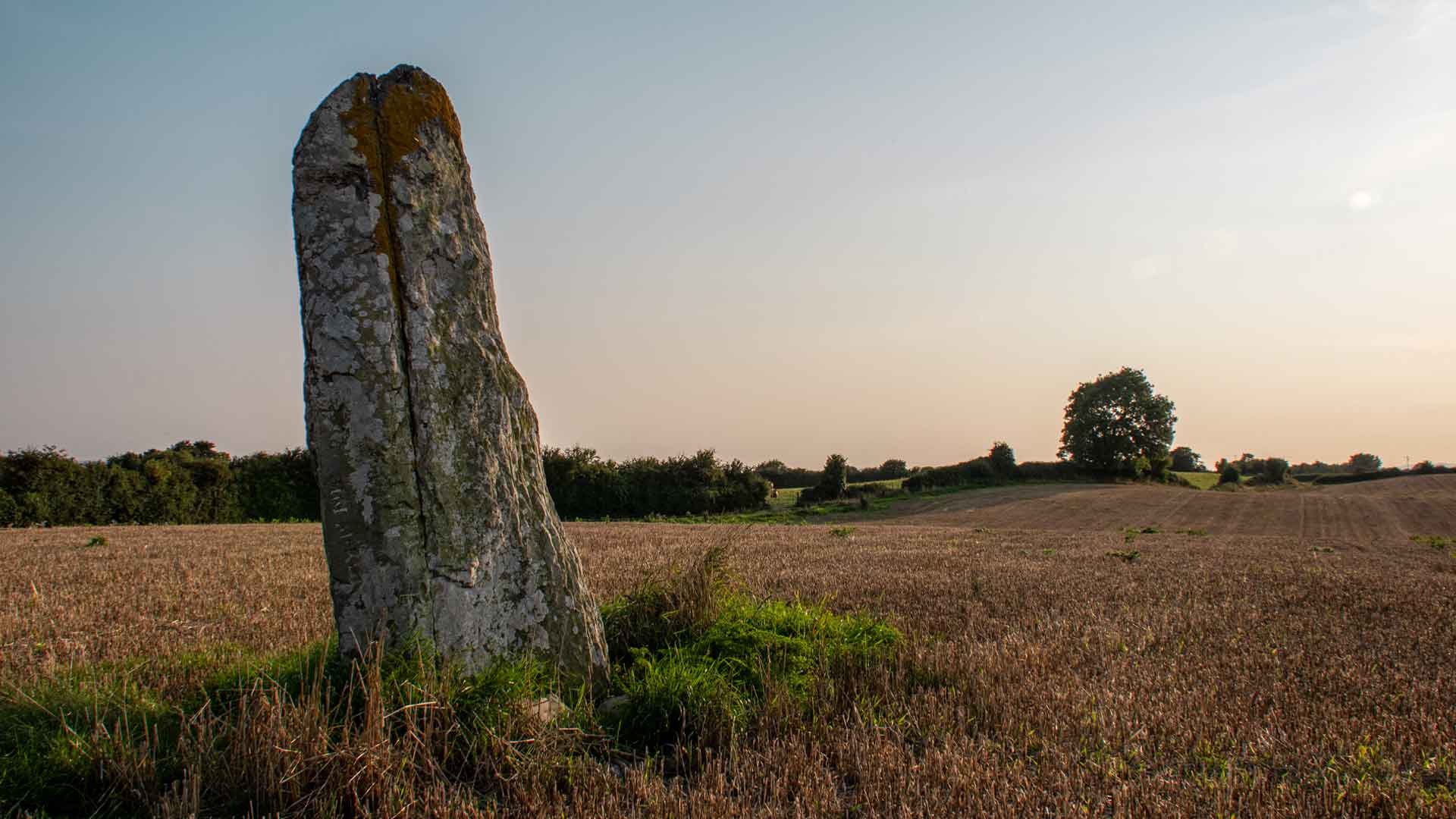
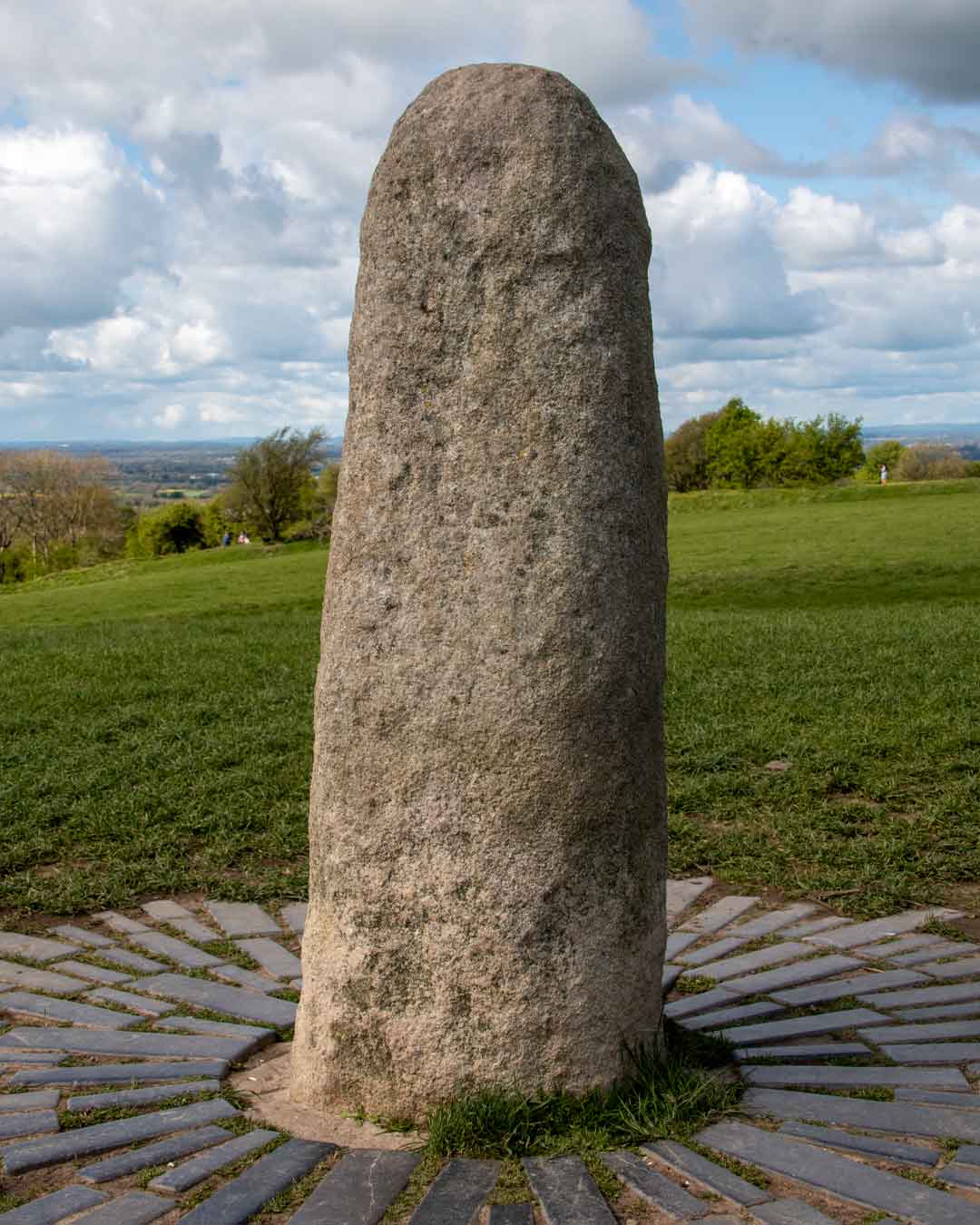
Standing Stones
Standing Stones are usually very difficult to date accurately. In Ireland most are thought to have been erected from the beginning of the Bronze Age (2500BCE) to the end of the Iron Age (500CE), although a few are thought to date from the Neolithic (3800-2500BCE).
Many standing stones were modified in later times with the addition of ogham script carved onto them. Some remained in use during the early Christian period, although a lot of these stones were also altered by carving crosses and other symbols to represent the new religion.
Many of the Standing Stones are associated with mythological characters or legends. However, the most common is that they are the result of stone throwing contests, usually between Fionn Mac Cumhail and various giants.
Often located in farmer's fields, one of the biggest threats to these monuments is their use as scratching posts for livestock, which churns up the ground beneath them making them unstable and prone to being pushed over.

Stone Rows
Stone Rows are a line of freestanding stones usually comprising of between three and six stones in a row 2-13m long. In most cases the stones are laid out in order of height with the largest stone usually at the southwest end of the row.
They are sometimes known as ‘stone alignments’ as a significant number of them are thought to be aligned with various astronomical events. A linear setting of stones is a very efficient way of marking a specific solar or lunar alignment so it is likely that some did have a calendrical function.
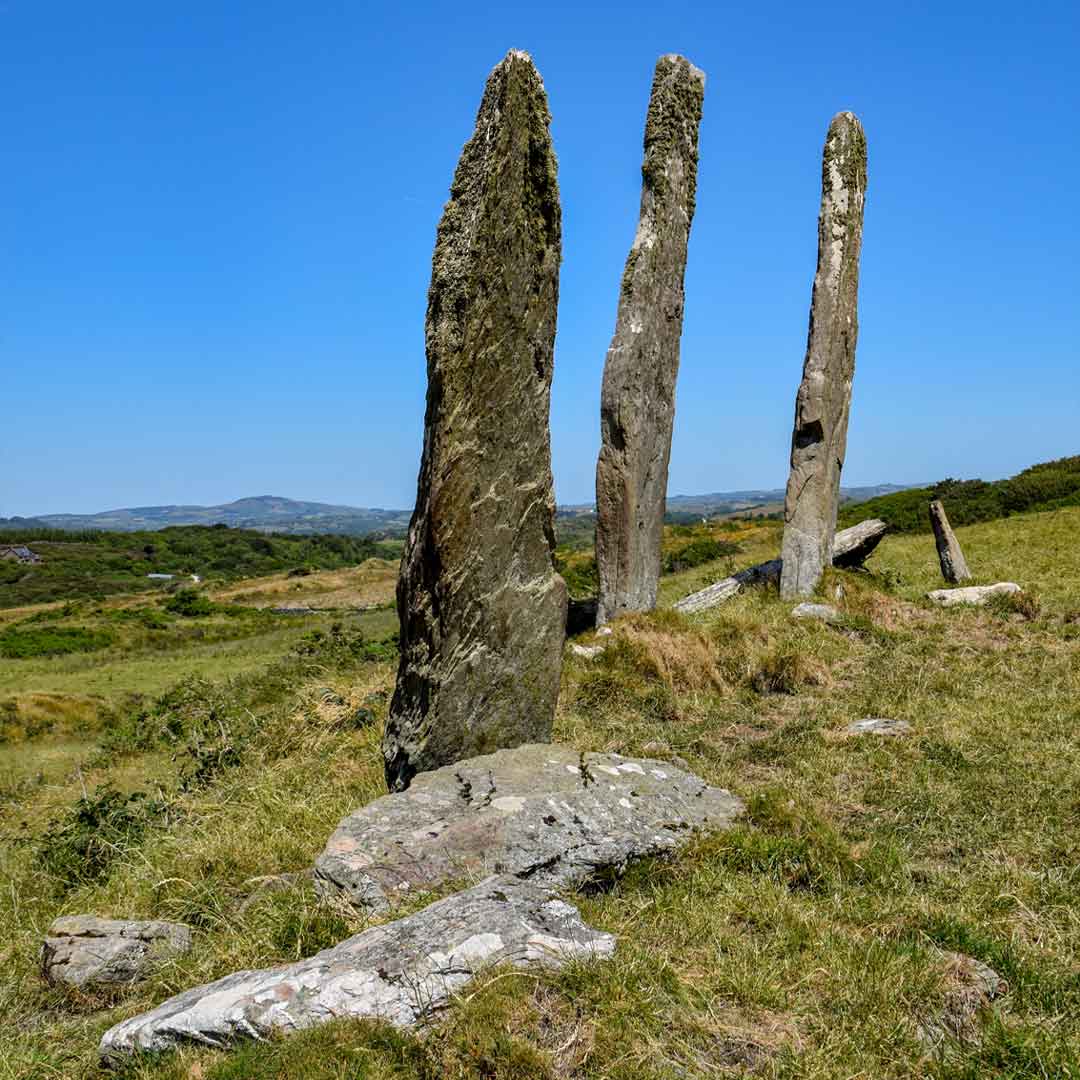
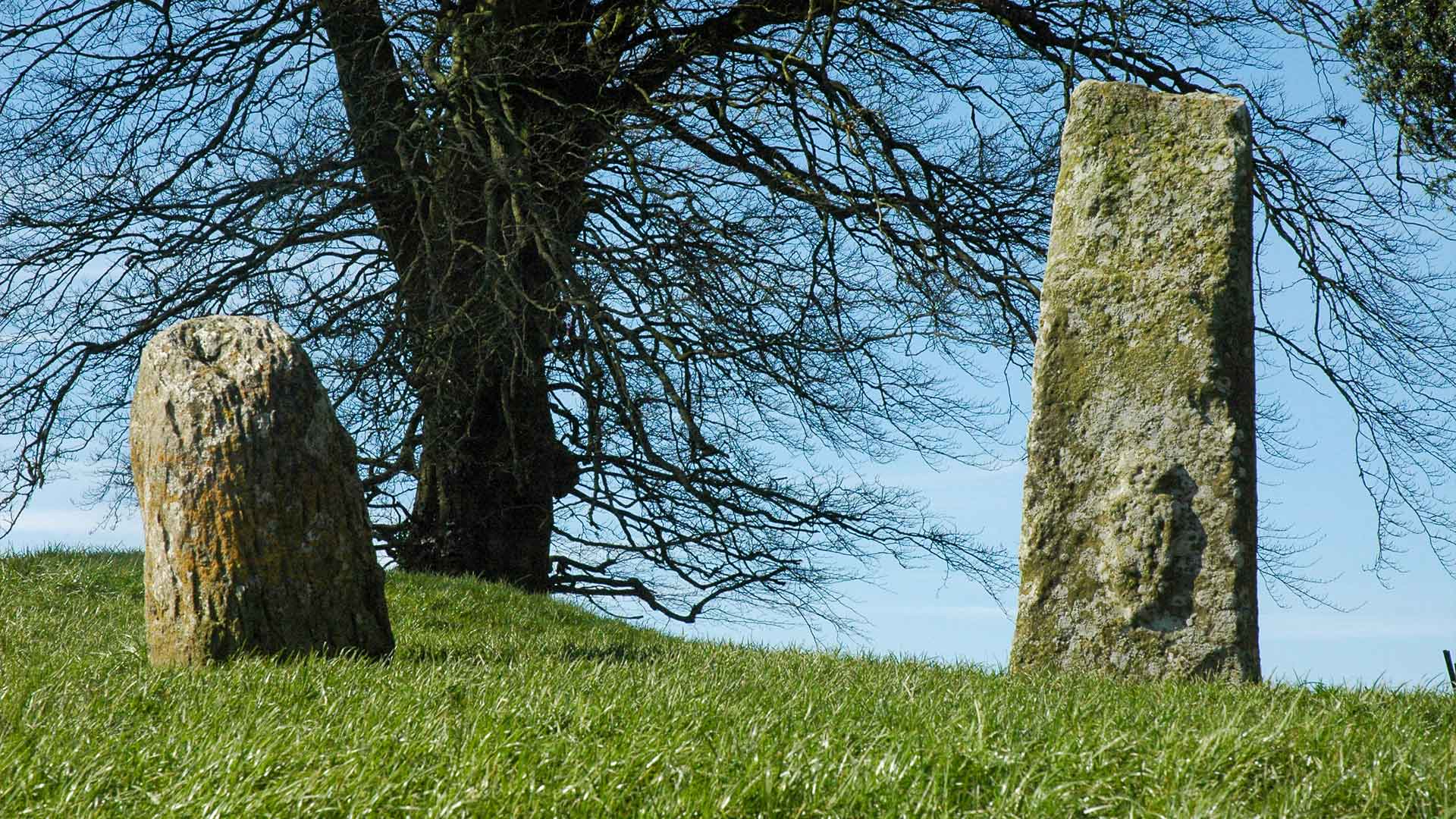
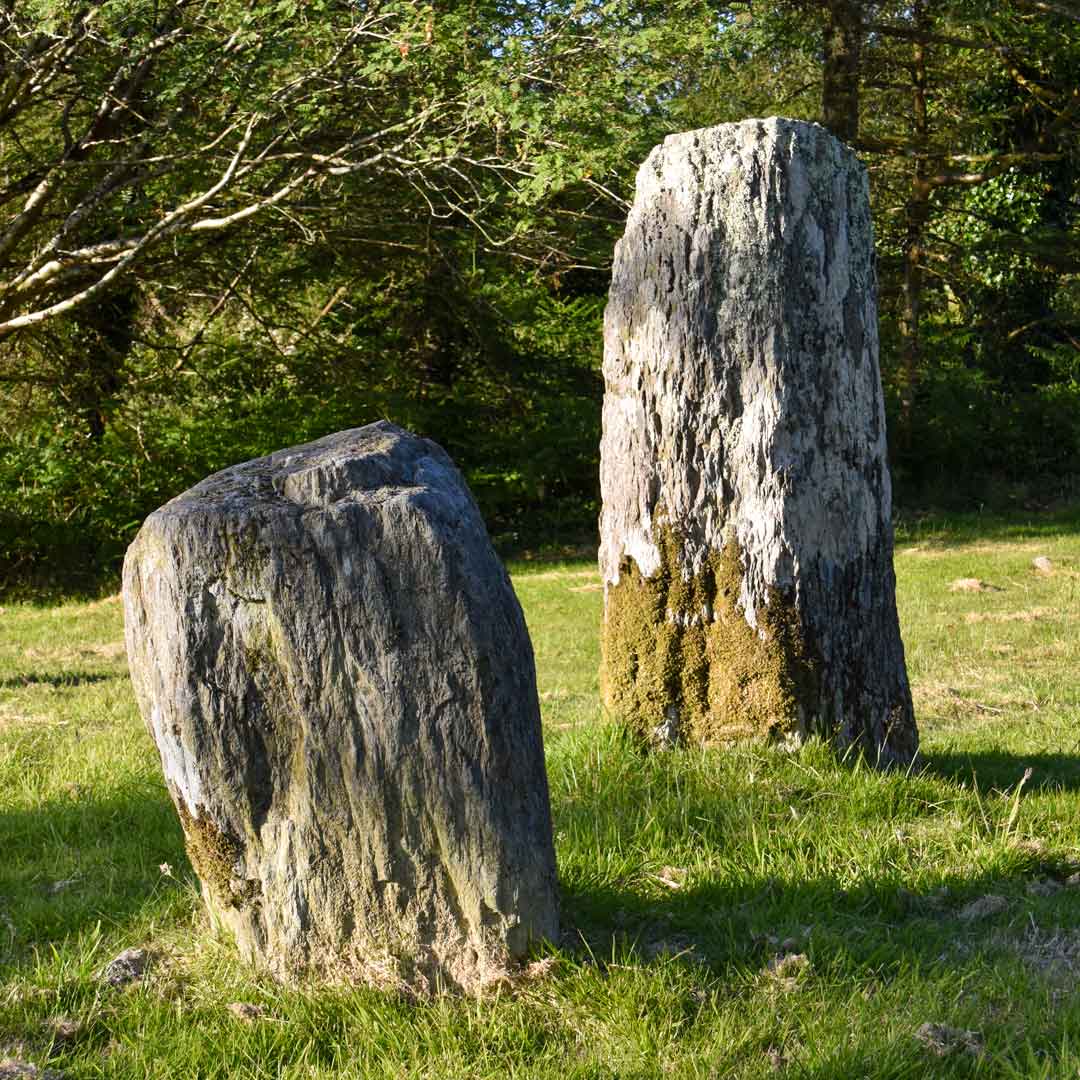
Stone Pairs
Stone Pairs usually consist of one tall stone (2-4m) and a shorter stone. Stone Pairs, are sometimes called ‘Adam & Eve’ stones as each stone in the pair represents a male and female aspect. In some cases they are also functioned as gateway stones, marking the entrance to a ritual or ceremonial space.
Though they appear throughout the Country, the majority of stone rows & pairs are found in the counties Cork & Kerry. Some are sited close to other monuments such as Five Stone Circles, Cairns or Ceremonial Enclosures. Although few have been excavated, both Rows & Pairs are thought to date from the mid to late Bronze-Age (1800-800BCE).
Check out the examples below or click here to view all Standing Stones or Rows & Pairs
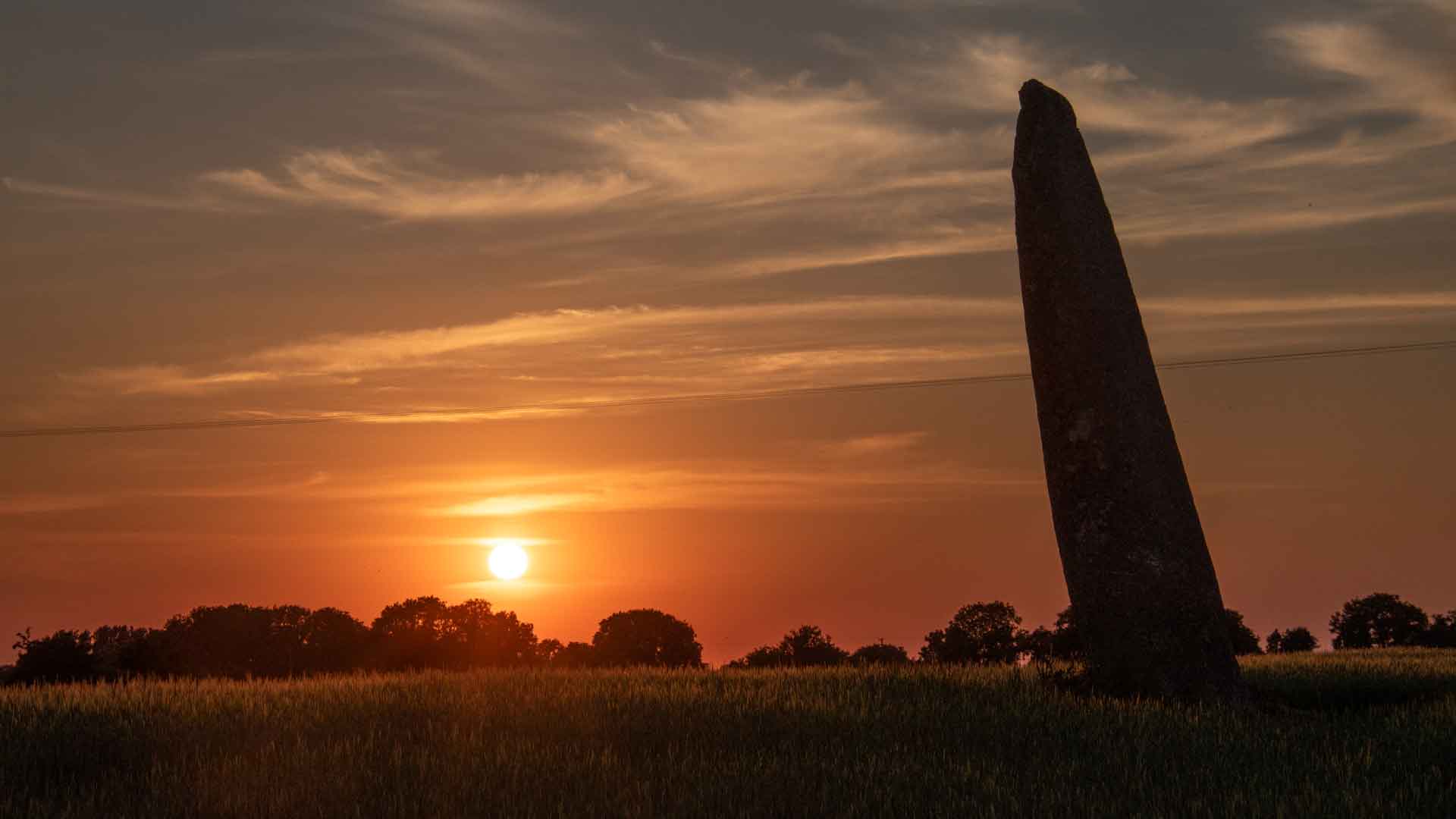
Examples of Standing Stones, Rows & Pairs

Standing Stones, Rows & Pairs
Standing Stones, also known as gallauns or menhirs, are found across the irish landscape. They can be found solely as monoliths, or as part of a group of similar stones, often in pairs or rows. Their size can vary considerably, but their shape is generally uneven and squared, often tapering towards the top.
Little is known of their intended function, though it is believed they were used variously as prehistoric burial markers, commemorative monuments, indicators of routeways or tribal boundaries. It is possible that rituals and other ceremonies would have been carried out around many of them.
There are over 5000 standing stones spread across Ireland with over 1000 in County Cork alone! That figure along with the 250+ stone pairs and 200+ stone rows, makes for a lot of these upright ancient rocks.



Standing Stones
Standing Stones are usually very difficult to date accurately. In Ireland most are thought to have been erected from the beginning of the Bronze Age (2500BCE) to the end of the Iron Age (500CE), although a few are thought to date from the Neolithic (3800-2500BCE).
Many standing stones were modified in later times with the addition of ogham script carved onto them. Some remained in use during the early Christian period, although a lot of these stones were also altered by carving crosses and other symbols to represent the new religion.
Many of the Standing Stones are associated with mythological characters or legends. However, the most common is that they are the result of stone throwing contests, usually between Fionn Mac Cumhail and various giants.
Often located in farmer's fields, one of the biggest threats to these monuments is their use as scratching posts for livestock, which churns up the ground beneath them making them unstable and prone to being pushed over.

Stone Rows
Stone Rows are a line of freestanding stones usually comprising of between three and six stones in a row 2-13m long. In most cases the stones are laid out in order of height with the largest stone usually at the southwest end of the row.
They are sometimes known as ‘stone alignments’ as a significant number of them are thought to be aligned with various astronomical events. A linear setting of stones is a very efficient way of marking a specific solar or lunar alignment so it is likely that some did have a calendrical function.



Stone Pairs
Stone Pairs usually consist of one tall stone (2-4m) and a shorter stone. Stone Pairs, are sometimes called ‘Adam & Eve’ stones as each stone in the pair represents a male and female aspect. In some cases they are also functioned as gateway stones, marking the entrance to a ritual or ceremonial space.
Though they appear throughout the Country, the majority of stone rows & pairs are found in the counties Cork & Kerry. Some are sited close to other monuments such as Five Stone Circles, Cairns or Ceremonial Enclosures. Although few have been excavated, both Rows & Pairs are thought to date from the mid to late Bronze-Age (1800-800BCE).
Check out the examples below or click here to view all Standing Stones or Rows & Pairs

Examples of Standing Stones, Rows & Pairs

Standing Stones, Rows & Pairs
Standing Stones, also known as gallauns or menhirs, are found across the irish landscape. They can be found solely as monoliths, or as part of a group of similar stones, often in pairs or rows. Their size can vary considerably, but their shape is generally uneven and squared, often tapering towards the top.
Little is known of their intended function, though it is believed they were used variously as prehistoric burial markers, commemorative monuments, indicators of routeways or tribal boundaries. It is possible that rituals and other ceremonies would have been carried out around many of them.
There are over 5000 standing stones spread across Ireland with over 1000 in County Cork alone! That figure along with the 250+ stone pairs and 200+ stone rows, makes for a lot of these upright ancient rocks.


Standing Stones
Standing Stones are usually very difficult to date accurately. In Ireland most are thought to have been erected from the beginning of the Bronze Age (2500BCE) to the end of the Iron Age (500CE), although a few are thought to date from the Neolithic (3800-2500BCE).
Many standing stones were modified in later times with the addition of ogham script carved onto them. Some remained in use during the early Christian period, although a lot of these stones were also altered by carving crosses and other symbols to represent the new religion.
Many of the Standing Stones are associated with mythological characters or legends. However, the most common is that they are the result of stone throwing contests, usually between Fionn Mac Cumhail and various giants.
Often located in farmer's fields, one of the biggest threats to these monuments is their use as scratching posts for livestock, which churns up the ground beneath them making them unstable and prone to being pushed over.


Stone Rows
Stone Rows are a line of freestanding stones usually comprising of between three and six stones in a row 2-13m long. In most cases the stones are laid out in order of height with the largest stone usually at the southwest end of the row.
They are sometimes known as ‘stone alignments’ as a significant number of them are thought to be aligned with various astronomical events. A linear setting of stones is a very efficient way of marking a specific solar or lunar alignment so it is likely that some did have a calendrical function.


Stone Pairs
Stone Pairs usually consist of one tall stone (2-4m) and a shorter stone. Stone Pairs, are sometimes called ‘Adam & Eve’ stones as each stone in the pair represents a male and female aspect. In some cases they are also functioned as gateway stones, marking the entrance to a ritual or ceremonial space.
Though they appear throughout the Country, the majority of stone rows & pairs are found in the counties Cork & Kerry. Some are sited close to other monuments such as Five Stone Circles, Cairns or Ceremonial Enclosures. Although few have been excavated, both Rows & Pairs are thought to date from the mid to late Bronze-Age (1800-800BCE).
Check out the examples below or click here to view all Standing Stones or Rows & Pairs



